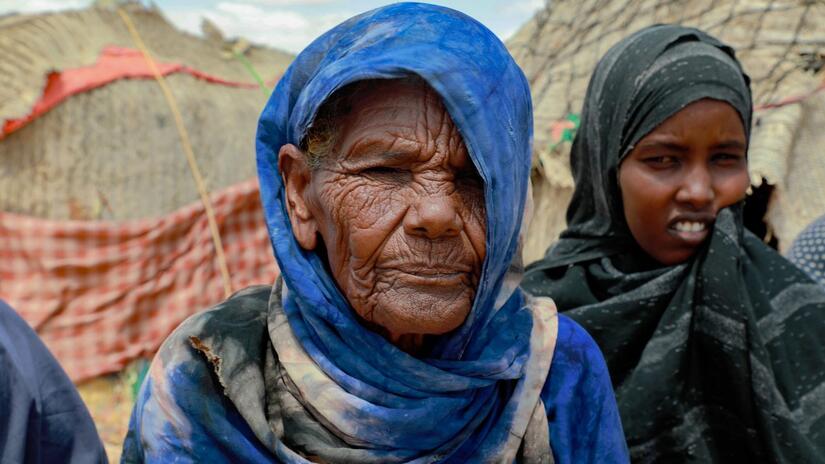Nairobi/Geneva, 7 September 2022—Nearly a million people have been forced to leave their homes in search of food and water in parts of Somalia and Kenya, as a catastrophic hunger crisis continues to unfold. More than 22 million people are approaching or experiencing a complete lack of food in the Horn of Africa. The situation is projected to get worse in early 2023. Nomadic communities are particularly hard hit by food shortages and skyrocketing prices. While food and funds will address part of the problem, without a reliable mechanism of reaching nomadic families with consistent and holistic humanitarian assistance, the world’s response to the hunger crisis will remain both inefficient and insufficient, warned the International Federation of Red Cross and Red Crescent Societies (IFRC) today.
Mohamed Babiker, IFRC’s head of Kenya and Somalia delegation said:
“Millions of lives are at risk. But as the humanitarian community accelerates its response, we should ensure that mistakes of the past decades are not repeated. It is crucial that aid is not just available—but that it also reaches the right people in an efficient manner. Most of the affected families are from pastoralist communities, who are often nomadic, and can only be reached by those who are close enough to them to keep up with their movements to provide uninterrupted assistance. A local response is vital.”
In Kenya, most of the areas experiencing food insecurity are in the Arid and Semi-arid lands (ASAL) areas, where communities practice pastoralism and therefore depend mainly on meat and milk for nutrition and income. The lack of rain has forced families out of their homes, in search of water and pasture.
In Somalia, women and girls have been disproportionally affected by the crisis as they tend to travel long distances in search of water and firewood. They have also been separated from their families and remain behind with the livestock while the men and boys migrate in search of pasture and water.
Babiker added: “The response is facing two major challenges. The biggest one is the lack of sufficient resources to purchase emergency relief items. However, even if you have the money, you need to be able to reach these nomadic communities, in an efficient and consistent manner. This is crucial. We call upon partners and donors to invest in institutions that have reliable access to families on the move.”
Bringing humanitarian assistance to families who are constantly on the move is one of the greatest challenges aid workers face. In response, Red Crescent teams in Somalia work closely with nomadic communities, so there is never a question about where to deliver aid. These volunteers come from the very communities they serve. With recent reports that more than 700 children have died in nutrition centres across Somalia, it is even more crucial that aid organizations reach affected people in their communities before their situation becomes critical as some do not reach health centres, or arrive when it is too late.
In addition to food, people affected by drought also need health services. During field visits to Puntland and other parts of the country, IFRC and Somali Red Crescent teams care for displaced people who are exhausted and sick. Red Crescent teams in Somalia, supported by the IFRC, reach nomadic communities with mobile clinics to provide basic health services in remote regions of the country.
“Our strength lies in our volunteer network which comes from the communities we serve. They understand the cultural context and local languages and have in-depth knowledge and understanding of affected communities,” said Babiker.
Red Cross and Red Crescent teams will also focus on delivering cash to families to meet their food, health and other urgent needs. Cash gives people the freedom to choose what they need most to help their families stay healthy and is more convenient for nomadic communities who would otherwise need to carry in-kind aid with them as they move. To date, Red Cross and Red Crescent teams in Kenya and Somalia have reached, collectively, at least 645,000 people affected by the drought with health services, cash assistance, as well as water, sanitation and hygiene services.
Note to editors: New high-quality photos and videos from drought affected parts of Somalia and Kenya are available at this link: https://www.ifrcnewsroom.org/
For more information, please contact:
In Nairobi: Euloge Ishimwe, +254 735 437 906, [email protected]
In Geneva: Anna Tuson, +41 79 895 6924, [email protected]





